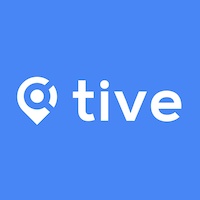Wochenrückblick: Wenn Süßwarenmangel auf Kriegsgebietslogistik trifft

August 7, 2025
October 24, 2025
x min. Lesedauer

Die Lieferkettengeschichten dieser Woche lesen sich wie Fiktion. Pennsylvania Ladungsdiebstahl nimmt zu, weil Diebe ihre üblichen Ziele im Bereich Elektronik aufgegeben haben, um eine einfachere Strategie zu verfolgen — zufällige Paletten aus Lagerhäusern zu stehlen. In der Zwischenzeit investiert Mars 2 Milliarden Dollar in US-Fabriken, weil die Amerikaner Süßigkeiten schneller verschlingen, als die Produktionslinien mithalten können. Und während der Mars versucht, die Nachfrage nach Snickers zu decken, bewegen sich Pharmaunternehmen durch Kriegsgebiete und versenden Krebsmedikamente in sensorreichen Behältern bei -150 °C. Auch die Universitäten passen sich an: In Lieferkettenprogrammen wird jetzt Programmieren gelehrt, und Professoren setzen ChatGPT in den Klassenzimmern ein. Und Nachhaltigkeit ist rentabler denn je: Yellowstone verwandelt ausrangierte Bettwäsche in neue Produkte, während Target die Lieferanten die CO2-Emissionen genauso genau verfolgen lässt wie den Umsatz. Die alltägliche Welt der Logistik scheint plötzlich nicht mehr so alltäglich zu sein, oder?
Schon wieder schlagen lange Finger zu: Pennsylvania stürzt die Frachtdiebstahl-Party ab
Der Bericht vom Juni über Frachtdiebstahl liest sich wie eine Kriminalitätslöschung mit einer Wendung: Pennsylvania hat sich seinen Weg in die Top Fünf geebnet während Diebe ihre Elektronikbesessenheit gegen das eintauschten, was sie am schnellsten schnappen konnten.
Die ungewollte Krone des Keystone State
Pennsylvania verdrängte Georgia vom fünften Platz und schloss sich Kalifornien (immer noch amtierender Meister), Tennessee, Texas und Illinois in der Hall of Shame der Frachtkriminalität an. Philadelphia wurde Ground Zero für die Welle der Diebstähle im Bundesstaat, wo Kriminelle unbeaufsichtigte Ladungen fressen, die vor Logistikzentren geparkt sind und auf Termine warten — leichte Beute für den Diebstahl über Nacht. Montag und Freitag erwiesen sich als die neuen Lieblingstage für Diebe. Damit wurde das Muster von Mittwoch bis Freitag im Mai hinter sich gelassen, während sich die Verbrechen gleichmäßig auf die Nachtzeiten (00:00 — 06:00), Vormittag (06:00 — 12:00) und Nachmittag (12:00 — 18:00) verteilten, jeweils zu 26%.
Von Gadgets bis hin zu Tragetaschen
Diebe wechselten ihre Einkaufslisten dramatisch — verschiedene Ladungen und gemischte Ladungen standen ganz oben auf der Liste der am häufigsten gestohlenen Waren im Juni, gefolgt von Essen und Getränke, während Elektronik fiel nach Monaten der Dominanz auf den fünften Platz. Diebstahl blieb in über 50% der Fälle die bevorzugte Methode des Diebstahls, wobei Lagerhäuser, Vertriebszentren und Autohäuser als bevorzugte Jagdgründe für Kriminelle dienten. Die Verlagerung hin zu „opportunistischen Waren mit hohem Umsatz“ deutet darauf hin, dass Diebe heute Quantität der Qualität vorziehen. Warum Zeit damit verbringen, iPads zu pflücken, wenn Sie sich eine ganze gemischte Palette schnappen und sie später aussortieren können?
Mars gibt 2 Milliarden US-Dollar für amerikanische Fabriken aus (denn wer liebt lokale Snickers nicht?)
Der Mars hat gerade angekündigt, dass er pumpt 2 Milliarden US-Dollar für das verarbeitende Gewerbe in den USA bis 2026 — weil offenbar 6 Milliarden Dollar in den letzten fünf Jahren nicht genug Süßwarengeld waren. Der Lebensmittelgigant produziert bereits 94% seiner in den USA verkauften Produkte in den USA, aber er verdoppelt sein Angebot und geht mit Volldampf voran.
Sweet Home Alabama (und Utah und überall sonst, wo Mars produziert)
Mars begann seinen Kaufrausch mit einer 240 Millionen Dollar teuren Nature's Bakery-Anlage in Utah, die letzte Woche eröffnet wurde. Sie schuf 230 Arbeitsplätze und die Kapazität, jährlich fast 1 Milliarde Riegel herzustellen. Das ist richtig: 1 Milliarde weichgebackene Rechtecke mit gesunden Snacks, was erklärt, warum der Umsatz von Nature's Bakery im vergangenen Jahr um 30% gestiegen ist. CFO Claus Aagaard nennt den Mars in den USA den „größten und wichtigsten Markt“ — was offensichtlich klingt, wenn man bedenkt, dass wir das Land sind, das frittierte Snickers erfunden hat.
Die 36-Milliarden-Dollar-Tirsche an der Spitze
Der 2-Milliarden-Dollar-Werksfonds von Mars sieht neben dem bevorstehenden Kauf von Kellanova in Höhe von 36 Milliarden US-Dollar fast urig aus — dem Mega-Deal, der Pringles, Pop-Tarts und Cheez-Its in sein ohnehin riesiges Portfolio aufnehmen würde. Zwischen Schokoriegeln, Tiernahrung und bald zu erwartenden Käsecrackern kontrolliert Mars genug Snack-Immobilien, um jeden Roadtrip, jede Studienstunde und jede Mitternachtssehnsucht in ganz Amerika zu stillen.
Ihre Pillen können jetzt durch ein Kriegsgebiet fliegen und eingefroren bleiben
Die Chancen stehen gut, dass lebensrettende Behandlung Als Sie in Ihrer Apotheke saßen, legten 10.000 Meilen bei -150 °C zurück, wichen drei Wetterkatastrophen aus und überquerten Grenzen, wo politische Spannungen heißer sind als der Asphalt. Pharmalogistik ist zu einem geworden Schachspiel mit hohen Einsätzen wo eine falsche Bewegung Millionen an verdorbener Medizin bedeutet — und Patienten ohne Behandlung.
Das 100.000-Dollar-Paket, das für sich selbst denkt
Stellen Sie sich einen schuhkartongroßen Behälter mit Spezialarzneimitteln vor, die mehr wert sind als Ihr Auto, und ausgestattet mit genug Sensoren, um mit einem Raumschiff mithalten zu können. Diese intelligenten Behälter ernähren Echtzeit-Temperaturdaten für KI-Systeme die Sendungen während des Fluges umleiten, wenn Wirbelstürme auftreten oder die Grenzen plötzlich geschlossen werden. Pharmaunternehmen arbeiten jetzt mit CDMOs und CMOs zusammen, die den Code bereits geknackt haben bewegliche ultrakalte Biologika durch regulatorische Albträume in mehreren Ländern. Das klingt zwar schwierig, aber die Vorteile sind vielfältig: Medikamente erreichen die Patienten schneller, mit weniger Verschwendung, und Unternehmen prognostizieren Nachfragespitzen, bevor es zu Engpässen kommt.
Jeder hat eine Zertifizierung — was nun?
GDP- und CEIV-Zertifizierungen bedeuten nichts, wenn jeder sie hat. Die Zukunft gehört Unternehmen, die lebendige Netzwerke aufbauen — nicht nur Schifffahrtswege, sondern Ökosysteme, die Hersteller, Händler und Geräte miteinander verbinden. Als Klimakatastrophen zur Routine werden und Handelskriege entzünden sich Über Nacht bröckelt die traditionelle Logistik. Die pharmazeutischen Lieferketten von morgen werden keinen Notfallplänen folgen — sie werden Spüren Sie Störungen, bevor sie eintreten und leiten um, während andere immer noch versuchen zu verstehen, was passiert ist.
Die Supply Chain School wird im Silicon Valley zum Glow Up
In Lieferkettenprogrammen wurde den Schülern das Zählen von Kartons beigebracht. Jetzt bringen sie ihnen bei, Roboter dazu zu bringen, die Kisten zu zählen, während KI vorhersagt, welche Boxen die Kunden nächste Woche wollen werden. Universitäten im ganzen Land sind hektische Neugestaltung ihrer Lehrpläne—weil Unternehmen dringend Absolventen brauchen, die sowohl Gabelstapler als auch Python sprechen.
Die Datenrevolution
Wir sehen das Daten- und KI-Revolution Universitäten im ganzen Land übernehmen — fast wie bei einem akademischen Wettrüsten. Im Bundesstaat Iowa müssen die Studierenden nun ERP-Systeme und prädiktive Analytik beherrschen. Marquette ging voll auf Tony Stark, nachdem Omron Corp. 2022 coole 1 Million $ für den Bau des Advanced Automation Lab ausgegeben hatte, wo Technik und Wirtschaft in einer wunderschönen, roboterbetriebenen Einheit aufeinandertreffen. Sogar Tennessee sprang auf den Zug auf und veranstaltete einen simulierten Mikrobrauerei-Kurs, in dem die Studierenden die Grundlagen der Lieferkette erlernen, bevor Professor Lance Saunders sie mit komplexen Datensätzen versorgt. „Datenanalysen sind ein großartiges Werkzeug, aber sie sind auch ein gefährliches Werkzeug, wenn Sie nicht wissen, was Sie tun“, warnt Saunders.
ChatGPT geht aufs College (und Professoren unterstützen es)
Wisconsin hat KI-Schulungen für alle Wirtschaftsstudenten zur Pflicht gemacht, während die Fakultät versucht, mit ihren technisch versierten Studenten Schritt zu halten. Henrik Sternberg vom Bundesstaat Iowa verfolgt einen erfrischend realistischen Ansatz: Er ermutigt die Studierenden aktiv, ChatGPT zu verwenden, da er weiß, dass es unausgegorene Lösungen ausspuckt. „Ich weiß, dass es das Problem nicht wirklich lösen und ihnen nicht die richtige Lösung bieten wird“, gibt er zu. Dabei behandelt er KI-Ausfälle als lehrreiche Momente und nicht als Betrugsskandale. Kluger Schachzug, wenn man bedenkt, in welche Welt diese Studierenden ihren Abschluss machen werden.
So erkennen Sie, dass Ihre Lieferkette wirklich umweltfreundlich geworden ist
Nachhaltigkeit klingt auf dem Papier großartig, aber woher wissen Sie, ob Ihre Bemühungen funktionieren? 80% der Verbraucher sorgen sich um die Auswirkungen auf die Umwelt und 71% sind bereit, sich für nachhaltige Produkte zu entscheiden (auch für Artikel unter 10$). Deshalb ist es wichtig, alles richtig zu machen. Alles was es braucht ist ein paar verräterische Anzeichen um zu zeigen, dass Ihre Lieferkette erfolgreich umweltfreundlich geworden ist.
Ihre Partner sind jetzt besessen von CO2-Fußabdrücken
Target stellte fest, dass 96% seiner Treibhausgasemissionen aus seiner Lieferkette stammten (Hallo, Scope-3-Emissionen). Antwort des Ziels? Bringen Sie 80% der Lieferanten dazu, sich zu wissenschaftlich fundierten Emissionszielen zu verpflichten, und streben Sie eine Reduzierung um 30% bis 2030 an. Ihre Lieferanten konkurrieren jetzt darum, Ihnen ihre Solarmodule zu zeigen, mit ihren energieeffizienten Geräten zu prahlen und Ihnen monatliche Emissionsberichte zu senden. Ihr habt gemacht Stärkung der Nachhaltigkeit die Kosten für Geschäfte mit Ihnen. Partner, bei denen einmal die Augen verdreht wurden Umweltmetriken Behandle sie jetzt wie vierteljährliche Gewinnberichte.
Sie beherrschen die Kunst des profitablen Recyclings
Die Yellowstone National Park Lodges starrten auf 30 Kisten mit Textilien aus dem Ruhestand, die jeweils 600-800 Pfund wogen, nachdem COVID ihre Spendenpläne zunichte gemacht hatte. Allein im Jahr 2024 zerkleinerten sie 25.000 Pfund Stoff zu neuen Produkten und sparten so 20 Tonnen CO2 ein. Willkommen in Ihrer Kreislaufwirtschaft, wo nichts verschwendet wird. Sie verfolgen den Wasserverbrauch, überwachen die Scope-3-Emissionen aller Partner und verwandeln den Abfall von gestern in Rohstoffe von morgen. Ihre Rechenschaftssysteme erfassen jede Emissionsquelle, messen jede Gallone Wasser und wandeln Müll in Bargeld um. Nachhaltigkeit hat aufgehört, eine Kostenstelle zu sein — und wurde zum Gewinntreiber.
Wenn Lieferketten unbrauchbar werden, braucht man überall Augen
Diebe stehlen, was am nächsten ist. Mars gibt 2 Milliarden Dollar für Süßwarenfabriken aus. Krebsmedikamente in Kriegsgebieten. Diese Woche war verrückt, aber hier ist der rote Faden, der alle Katastrophen verbindet: Zu viele Menschen haben keine Ahnung, wo sich ihre Sachen befinden — oder in welchem Zustand sie sich befinden.
Das ist das Problem Tracking in Echtzeit löst. Wenn du hast Sichtbarkeit der Lieferung in Echtzeit, du weißt genau, wo alles ist — jede Sekunde eines jeden Tages. So einfach ist das.
Bewaffnen Sie sich mit Innovation: lassen Sie Tve Nehmen Sie eine Vorreiterrolle bei der Transformation Ihrer Lieferkettenabläufe ein. Machen Sie sich mit der Zukunft der Logistik vertraut —fange noch heute mit Tve an.


